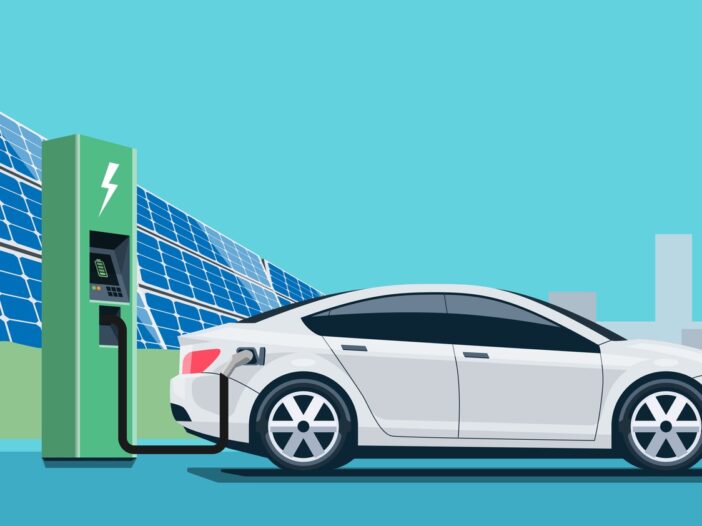In today’s Money Morning…automakers are increasingly worried about lithium supply…EVs are ramping up…a new rush for battery metals…and more…
While Elon Musk’s decision to grab a stake in Twitter and whether or not he would accept a seat on the board has captured most of the headlines recently, one of his comments has gone almost unnoticed.
Here is what he tweeted over the weekend:
‘Price of lithium has gone to insane levels! Tesla might actually have to get into the mining & refining directly at scale, unless costs improve.
‘There is no shortage of the element itself, as lithium is almost everywhere on Earth, but pace of extraction/refinement is slow.’
This was in response to a tweet from World of Statistics (@stats_feed) where they noted how much lithium prices have increased in the last year.
While I don’t usually pay much heed to Elon’s tweets, it’s interesting.
You see, it’s not the first time that Tesla has mentioned getting into lithium mining.
In fact, two years ago, Tesla tried to buy a lithium mining company, Cypress Development Corp. However, the deal fell through.
But then Tesla invited the bosses of Albemarle and Livent, two of the biggest lithium suppliers in the world, to its 2020 Battery Day.
And announced it would start mining lithium itself to add to its supply after buying the rights to 10,000 acres of lithium-rich clay deposits in Nevada.
The electric vehicle maker has been worried for years about lithium supply not ramping up fast enough. It’s been busy signing a bunch of deals with lithium miners such as Core Lithium [ASX:CXO] and Piedmont Lithium [ASX:PLL] to secure its lithium supply.
Of course, it’s not just Tesla now…
Automakers are increasingly worried about lithium supply
EVs are ramping up.
BloombergNEF estimates that by June there will be 20 million plug-in vehicles on the road globally…and that number will hit 26 million by the end of the year.
And with almost every carmaker planning to up their EV production, we will need a lot more lithium.
Of course, increasing production is not that easy.
First, it takes around seven years to get a lithium mine online.
And then, while much of the lithium is mined in places like Australia and Chile, most of the lithium processing and refining happens in China.
By the way, China is also worried about the lithium supply. China’s government recently met with several lithium market players to talk about a ‘rational return’ for lithium prices.
But prices could stay high for a while, with lithium demand outstripping supply. As Stuart Crow, chair of Lake Resources, said recently:
‘There simply isn’t going to be enough lithium on the face of the planet, regardless of who expands and who delivers, it just won’t be there. The carmakers are starting to sense that maybe the battery makers aren’t going to be able to deliver.
‘The forecasts for the [lithium] deficit this year vary from 50,000 tonnes per annum out to 400,000 tonnes, on a market that looks potentially to produce 450,000 tonnes a year. Anecdotally, we’re hearing stories of two very large battery makers in the market trying to source 150,000 tonnes [each] of lithium hydroxide this year. And with 450,000 tonnes of supply, it’s not going to happen.’
Costs are starting to build up, too.
As Simon Moore from Benchmark Minerals Intelligence said earlier this month, only seven years ago, 40% of the costs of a lithium-ion battery were raw materials, but those costs have now ballooned to 80% of the cost of the battery.
Moore thinks we could see automakers get more hands-on in the battery mining process, as he continued:
‘If EVs mean lithium ion batteries, EVs must now mean critical minerals and mining.
‘As a result of surging EV battery demand and a lack of new supply, pressure on the critical minerals that fuel lithium ion battery production have been increasing.
‘And right now, there is not enough of these raw materials in the pipeline to take the majority of EV makers beyond 2030.
‘While upwards of $500bn has flowed into building the 285 gigafactories around the world — and $150bn last year alone — critical mineral mines and mid stream processing plants have not seen anywhere like this type of investment.
‘This great EV raw material disconnect has OEMs, the ultimate end users of these battery cells, concerned.
‘An industry that is used to dominating a supply chain is suddenly coming to the realisation that it has to build these new energy supply chains from scratch after the capital markets failure to step up.
‘But to have the ultimate sway of industrial power you need to own the mines, in part or in full.
‘This is the only way to guarantee the raw material to make your batteries and EVs.
‘Big talk on EVs must now mean equally as big statements on mining.
‘After all, a gigafactory without secure raw materials is as useful to an OEM as a grain silo.’
A new rush for battery metals
If something has become clear from the pandemic, it’s the perils of someone else controlling your supply chains.
As EV makers continue to look into an electric future, it’s becoming clear that they’ll need to invest in EV raw materials if they want to get their hands on the materials to produce as many EVs as they say.
But also to keep costs down.
We are already seeing some automakers act in this direction.
Ford’s CEO Jim Farley, for example, has said recently that the company has to move on from their current strategy to control supply chains ‘all the way back to the mines’.
And GM has invested in a lithium mine in California.
So we could see automakers becoming more involved and pour money into mining and critical minerals to secure supply chains.
But for now, demand continues to outstrip supply, with the lithium supply crunch really hitting home.
And while lithium has become pretty popular, there are plenty of other materials needed for EV production, such as graphite, cobalt, nickel, and aluminium — to name a few.
Of course, there’ll be winners and losers, so stock selection will be key.
Until next week,
 |
Selva Freigedo,
For Money Morning
Selva is also the Editor of New Energy Investor, a newsletter that looks for opportunities in the energy transition. For information on how to subscribe, click here.

